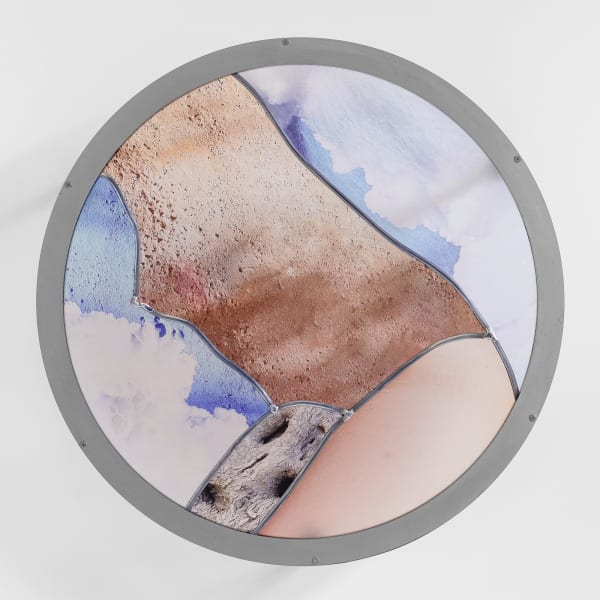"L’écorchure au palais": Clara Rivault
“All he had to do
To stop licking
The graze on the palate
For it to heal. ”
Clara Rivault
Matter seems to embrace itself in Clara Rivault's work. An artist with a literary sensibility who refers to Ovid and Homer, to the Metamorphoses and the Odyssey, she never forgets that myths find their source in rocks and plants, meteorological phenomena and the movement of the stars. The explanatory nature of myths, the archetypes conveyed by the characters in these founding tales, have constantly mutated over the centuries, but have come down to us as grids of interpretation still capable of influencing us - for better or worse. In Mucha's posters, we can still recognize the nymphs; in Clara Rivault's stained-glass windows, Nausicaa, Penelope, Circeus and Eurydice line up. The parallel with the poster artist is not gratuitous: the artist claims to work with images that are akin to symbolism, with an accumulation of significant motifs and an aesthetic preoccupation that puts the act in the foreground. It is with transparency and opacity that the latest stained-glass assemblages are set. The artist combines filters in such a way as to convey something of what she is making disappear at the same time: an identity for an allegory, a model for a fluid figure.
For the Dames series, Clara Rivault brings together raw earth and molten glass: the manual process thus defines the allegorical significance of these pieces. The melting of the glass cooks the clay, and the two cool down in an intertwined process that makes them inseparable; perhaps an allegory of love in these forms, which take up motifs of fertility? Perhaps... The glass and stone pieces in the Entre-branches series encourage this reading. The love relationships recounted in myths are often asymmetrical and violent. The Sea of Life performance, in which the artist tears herself from a mass of plaster, is something of a struggle. Myths reopen wounds somewhere, but we can't help coming back to them, being reborn.
-

Nausicaa, 2022
Sculpture
Glass, impression, lead, tin, steel
60 x 60 cm
Unique artwork© Grégory Copitet
-

Eurydice et l'étreinte du serpent, 2022
Sculpture
Carved limestone and glass snake
50 x 30 x 30 cm
Unique artwork
© Grégory Copitet -

Pénélope, 2022
SculptureGlass, impression, lead,tin, steel
60 x 60 cm
Unique artwork© Grégory Copitet
-

Figure 1,Les Dames 2022
Sculpture
White blown glass, ceramic
28 x 13 cm
Unique Artwork
© Grégory Copitet -

Les Entre-branches, 2022
Sculpture
Carved limestone and blown glass
50 x 50 x 50 cm
Unique artwork
© Grégory Copitet -
 L'amour liquide, 2022
L'amour liquide, 2022
Sculpture
Glass, printing, lead, tin, steel
140 x 80 cm
Unique artwork© Grégory Copitet










